#industrial equipment cover
Explore tagged Tumblr posts
Text

Top 5 Reasons to Choose the PTO Shaft L-11 6X6 Without Cover for Your Equipment: SBJ NIRMAL PRODUCTS
Introduction
When it comes to powering your equipment efficiently, choosing the right PTO (Power Take-Off) shaft is critical. The PTO Shaft L-11 without a cover is becoming a preferred choice among equipment owners for its robust design, reliability, and unmatched convenience. But why is this model worth considering? Let’s dive into the top reasons why it stands out.
What Is a PTO Shaft?
A PTO shaft is a critical component that transfers mechanical power from a tractor or engine to another piece of equipment, such as a rotavator, baler, or mower. It ensures seamless operation by efficiently transmitting power where it’s needed most.
These shafts are widely used in agriculture and industrial machinery to perform various tasks, from plowing fields to operating conveyor belts.
Overview of the PTO Shaft L-11 Without Cover
The PTO Shaft L-11 is an innovative model designed for efficiency and durability. Unlike traditional PTO shafts, it forgoes a protective cover, which adds a unique set of benefits for certain applications. Built with high-quality materials, it ensures optimal performance even in demanding conditions.
Top 5 Reasons to Choose the PTO Shaft L-11 Without Cover
Enhanced Durability
The PTO Shaft L-11 is built to last. It’s crafted from premium-grade steel, making it resistant to wear, tear, and corrosion. Whether you’re using it in dusty fields or industrial environments, its robust construction ensures a longer lifespan compared to conventional models.
Improved Power Transmission
With the L-11, you get superior power transfer efficiency. Its design minimizes energy loss during operation, making it an excellent choice for heavy-duty tasks. The uncovered structure allows for better cooling, ensuring consistent performance over extended periods.
Cost-Effective Solution
Why spend more when you don’t have to? The L-11 without a cover is often more affordable upfront than covered models. Additionally, it requires less maintenance, saving you money in the long run.
Easy Maintenance
Keeping your equipment in top shape is easier with the L-11. Its open design allows for quick inspection, cleaning, and repairs. You won’t have to deal with the hassle of removing and reinstalling covers, which reduces downtime significantly.
Lightweight and Convenient Design
The uncovered design of the L-11 makes it lighter and easier to handle. Whether you’re attaching it to a tractor or another piece of equipment, the process is straightforward. Its lightweight nature is particularly useful for mobile machinery.
Safety Considerations
While the L-11 is highly efficient, operating an uncovered PTO shaft requires extra caution. Always keep loose clothing and hair away from the shaft, and ensure the equipment is turned off during maintenance.
Industries That Benefit from PTO Shaft L-11
The versatility of the L-11 makes it ideal for several industries:
Agriculture: For tasks like plowing, tilling, and harvesting.
Construction: To power machinery like cement mixers and pumps.
Forestry: Perfect for operating wood chippers and saws.
Conclusion
The PTO Shaft L-11 without a cover is an excellent choice for those seeking durability, efficiency, and affordability. Its lightweight and easy-to-maintain design make it a top pick for various industries. While it requires careful handling for safety, the benefits far outweigh the drawbacks.
FAQs
1. How do I ensure safety while using the PTO Shaft L-11 without a cover? Always turn off the equipment before maintenance and keep the area clear of any loose items.
2. Is the PTO Shaft L-11 suitable for all types of equipment? It’s compatible with most machinery, but ensure it matches your equipment’s specifications.
3. What makes this model stand out from others? Its uncovered design allows for better cooling, easy maintenance, and cost-effectiveness.
4. Can I use the L-11 for high-torque applications? Yes, its robust construction is designed to handle heavy-duty tasks efficiently.
5. Where can I buy replacement parts for the L-11? Look for trusted suppliers or reach out to the manufacturer for authentic parts.

#PTO Shaft L-11 Without Cover#PTO Shaft#Equipment Parts#Durable PTO Shaft#Power Take-Off Shaft#Agricultural Equipment#Industrial Equipment#PTO Shaft Benefits#Cost-Effective PTO#Easy Maintenance PTO Shaft
0 notes
Text

Enhancing cattle welfare with adaptable cattle housing types in warmer weather
Cattle housing types significantly impact calf health and welfare, predominantly during the vulnerable early months of life. With this changing weather pattern adding complexity to the equation, farmers must adapt their housing strategies to ensure versatility and optimal conditions for their livestock. Temperature and humidity levels directly influence the increase in disease, making it essential to choose cattle housing types that can effectively adapt to these factors.
As the seasons transition and temperatures rise, cattle farmers face the challenge of ensuring the well-being of their livestock amidst changing environmental conditions. Particularly crucial is the management of calf housing, as calves in the UK are often exposed to temperatures below their thermal comfort zone (TCZ) during the birthing process.
According to data from the Met Office as of 2023, the mean annual maximum temperature in the UK stands at 10°C, with minimum temperatures in some areas in the UK reaching 2°C. This places calves in an environment below their thermal neutral zone (TNZ), which typically ranges between 15 and 25 °C during the first week of life. When temperatures fall below the lower critical temperature (LCT), calves must increase metabolic heat production to maintain thermal balance, often through energy-intensive processes such as shivering or increasing energy intake.
While individual calf housing has been traditionally favoured for perceived health benefits, there is growing evidence supporting the advantages of pair housing and large group management. Pair housing promotes better growth rates and solid feed intakes, while technological advancements such as computerised calf feeders aid in monitoring larger groups for signs of illness.
Embracing innovation for cattle welfare
In the face of warmer weather and the challenges posed by climate change, innovative options like Agri Span offer a beacon of hope for cattle farmers striving to maintain the health and welfare of their livestock. By prioritising animal welfare, adaptability, and sustainability, Agri Span represents a significant advancement in cattle housing types, empowering farmers to navigate the complexities of seasonal variations with confidence.
As we continue to witness the impacts of warmer weather on agriculture, investing in options that promote resilience and sustainability becomes not only a strategic imperative but also a moral obligation. By embracing innovation and prioritising the well-being of their livestock housing, cattle farmers can pave the way for a more sustainable and resilient future for agriculture.
#container canopies#Livestock housing#aggregate storage bays#Fabric Structures#industrial equipment supplier#waste bay covers
0 notes
Text
The Top Branding Agency in Pune
In today’s competitive market, branding is more important than ever. A strong brand can set you apart from the competition, create loyal customers, and help your business thrive. That’s where Pasay Invento, the most trusted branding agency in Pune, comes in. With years of experience, a deep understanding of market trends, and a commitment to excellence, Pasay Invento has earned its reputation as the go-to trusted branding agency in Pune.

Why Branding Matters
Branding is more than just a logo or a catchy tagline—it’s the essence of your business. It conveys your company’s values, mission, and personality to your target audience. Without a clear and compelling brand identity, businesses often struggle to connect with customers on an emotional level. As a trusted branding agency in Pune, Pasay Invento understands the complexities of branding and is equipped to deliver results that resonate.
What Sets Pasay Invento Apart?
What makes Pasay Invento the most trusted branding agency in Pune is our client-centric approach and the ability to craft unique, effective strategies for each business. We take the time to understand your goals, challenges, and the essence of your brand to develop solutions that align with your vision.
We don’t just create brands—we help businesses build trust with their audience. In a city like Pune, where industries are diverse and the market is competitive, choosing a trusted branding agency in Pune is critical. Pasay Invento’s in-depth market knowledge ensures that your brand is not only visually appealing but also speaks to the local culture and consumer behavior.
Comprehensive Branding Services
At Pasay Invento, we offer a wide range of services that make us the most trusted branding agency in Pune. We cover everything From logo design and messaging to complete brand strategy development. Our team of expert designers, strategists, and marketers work together to ensure that your brand leaves a lasting impression.
Some of our key services include:
Logo Design: A well-designed logo is the foundation of any brand. We create logos that not only look great but also tell the story of your business.
Brand Identity: From color schemes to typography, we help businesses develop a consistent and compelling brand identity.
Brand Strategy: Our strategic planning ensures your brand’s message reaches the right audience at the right time, making us the most trusted branding agency in Pune for long-term results.
Digital Marketing: In today’s digital age, a strong online presence is a must. We help brands grow through SEO, social media marketing, and more.
Why Trust Pasay Invento?
Our commitment to delivering quality work on time and within budget makes us the most trusted branding agency in Pune. Whether you’re a startup looking to establish your presence or an established business aiming to rebrand, we are here to help.
Our client testimonials and case studies speak volumes about our ability to transform brands. By working with Pasay Invento, you’re not just partnering with a branding agency; you’re collaborating with a trusted branding agency in Pune that has your best interests at heart.
Conclusion
In a bustling city like Pune, finding the right partner to handle your brand can make or break your business. Pasay Invento has proven time and again to be the most trusted branding agency in Pune, offering top-notch services that build brands, increase customer loyalty, and drive business growth. If you’re looking for a partner who understands the intricacies of branding and can help your business stand out, look no further. Pasay Invento is the trusted branding agency in Pune you’ve been searching for.
Reach out to us today to start your branding journey with the most trusted branding agency in Pune.
#branding agency in pune#In today’s competitive market#branding is more important than ever. A strong brand can set you apart from the competition#create loyal customers#and help your business thrive. That’s where Pasay Invento#the most trusted branding agency in Pune#comes in. With years of experience#a deep understanding of market trends#and a commitment to excellence#Pasay Invento has earned its reputation as the go-to trusted branding agency in Pune.#Branding agency in pune#Why Branding Matters#Branding is more than just a logo or a catchy tagline—it’s the essence of your business. It conveys your company’s values#mission#and personality to your target audience. Without a clear and compelling brand identity#businesses often struggle to connect with customers on an emotional level. As a trusted branding agency in Pune#Pasay Invento understands the complexities of branding and is equipped to deliver results that resonate.#What Sets Pasay Invento Apart?#What makes Pasay Invento the most trusted branding agency in Pune is our client-centric approach and the ability to craft unique#effective strategies for each business. We take the time to understand your goals#challenges#and the essence of your brand to develop solutions that align with your vision.#We don’t just create brands—we help businesses build trust with their audience. In a city like Pune#where industries are diverse and the market is competitive#choosing a trusted branding agency in Pune is critical. Pasay Invento’s in-depth market knowledge ensures that your brand is not only visua#Comprehensive Branding Services#At Pasay Invento#we offer a wide range of services that make us the most trusted branding agency in Pune. We cover everything From logo design and messaging#strategists#and marketers work together to ensure that your brand leaves a lasting impression.
0 notes
Text
Ful-Flo specializes in fountain services
#Ful-Flo specializes in fountain services#spray parks#agricultural & golf irrigation. We cover residential & commercial areas in Winnipeg & Manitoba.#Fountains services winnipeg#Fountains repairs manitoba#Agricultural irrigation manitoba#water treatment plants winnipeg#Ful-Flo Industries Ltd. was first incorporated in 1976. Providing irrigation and concrete splash or spray pads in Winnipeg#Manitoba and NW Ontario#Ful-Flo Industries is located on the outskirts of Winnipeg on the north Perimeter Highway just a ½ mile west of Highway#7#keywords:#Golf irrigation winnipeg#Spray pads winnipeg#Article:#Ful-Flo Industries Ltd. offers a warehouse of possibilities regarding the residential/do-it-yourself markets for irrigation in Manitoba. If#Read more#GOLF IRRIGATION#Ful-Flo Industries Ltd. is proud to support the golf course industry with the best product#people and equipment available. From our parts and service counter that will support#Agricultural irrigation winnipeg#AGRICULTURAL IRRIGATION#From its earliest days#Ful-Flo Industries Ltd. has left its mark in the agriculture industry. One of Ful-Flo Industries Ltd.'s major markets is the Manitoba Potat#fountains services manitoba#FOUNTAINS#A fountain conveys elegance and relaxation#while drawing attention to your area of interest It is human nature to be drawn to the beautiful fountain on your area#Spray pads manitoba#SPRAY PARKS
1 note
·
View note
Text
Fountain & Irrigation Services Experts in Winnipeg
#Ful-Flo specializes in fountain services#spray parks#agricultural & golf irrigation. We cover residential & commercial areas in Winnipeg & Manitoba.#Fountains services winnipeg#Fountains repairs manitoba#Agricultural irrigation manitoba#water treatment plants winnipeg#Ful-Flo Industries Ltd. was first incorporated in 1976. Providing irrigation and concrete splash or spray pads in Winnipeg#Manitoba and NW Ontario#Ful-Flo Industries is located on the outskirts of Winnipeg on the north Perimeter Highway just a ½ mile west of Highway#7#keywords:#Golf irrigation winnipeg#Spray pads winnipeg#Article:#Ful-Flo Industries Ltd. offers a warehouse of possibilities regarding the residential/do-it-yourself markets for irrigation in Manitoba. If#Read more#GOLF IRRIGATION#Ful-Flo Industries Ltd. is proud to support the golf course industry with the best product#people and equipment available. From our parts and service counter that will support#Agricultural irrigation winnipeg#AGRICULTURAL IRRIGATION#From its earliest days#Ful-Flo Industries Ltd. has left its mark in the agriculture industry. One of Ful-Flo Industries Ltd.'s major markets is the Manitoba Potat#fountains services manitoba#FOUNTAINS#A fountain conveys elegance and relaxation#while drawing attention to your area of interest It is human nature to be drawn to the beautiful fountain on your area#Spray pads manitoba#SPRAY PARKS
0 notes
Text
But the other images I had was like a mass refugee camp. So basically at that point in time, two months ago, about 20,000 people had sought refuge both in the hospital and outside the hospital. And these weren’t tents. They’re still not tents. They’re makeshift shelters with bed sheets or plastic bag sheets. The ones outside sleep on the floor. They’re lucky [if] they get a carpet or a mat. There was one bathroom at the time for about 200 people that they have to share. And inside, the hallways of the hospital were also made into shelters. There was hardly any room to walk, and there’s children running around everywhere. It’s important to remember all these people were not homeless. They all had homes that were destroyed. They’re all displaced people that took shelter in the hospital.
So that’s the kind of mass chaos that I encountered initially, and then I was told that every time there’s a bomb, give it about 15 minutes and the mass casualties come. That was the other thing that at the time shocked me: What we’d been seeing livestreamed on Instagram, on social media or whatever, I actually saw myself and it was worse than I can imagine. I saw scenes that were horrific that I’d never witnessed before and I never want to see again. You have a mother walking in holding her 8, 9-year-old, skinny — because they’re all starving — boy who’s dead, he’s cold and dead and [the mother is] screaming, asking for someone to check his pulse and everybody’s busy in the mass chaos. So that was kind of my initial welcoming scene when I entered Khan Younis the first time.
{...}
What I saw — I’m an eye surgeon, an eye plastic surgeon, and so I saw the classic, what I penned “the Gaza shrapnel face,” because in an explosive scenario, you don’t know what’s coming. When there’s an explosion, you don’t go like this [cover your face], you kind of actually, in fact, open your eyes. And so shrapnel’s everywhere. It’s a well-known fact that the Israeli forces are experimenting [with] weapons in Gaza to boost their weapon manufacturing industry. Because if a weapon is battle-tested, it’s more valuable, isn’t it? It’s got a higher value. So basically they’re using these weapons, these missiles that purposely, intently create these large shrapnel fragments that go everywhere. And they cause amputations that are unusual.
Most amputations occur at the weak points, the elbow or the knee, and so they’re better tolerated. But these [shrapnel fragments] are causing mid-thigh, mid-arm amputations that are more difficult, more challenging, and also the rehabilitation afterward is also more challenging. Also these shrapnels [are] unlike a bullet wound. A bullet wound goes in and out; there’s an entry and exit point. Shrapnel stays there. So you gotta take it out. So the injuries I saw were — I mean, I saw people with their eyes blown apart. And when I was there, and this is my experience, I treated all children when I was there the first time. It was kids that [were aged] 2, 6, 9, 10, 13, 15, and 16, and 17 were the ones that I treated. And their eyes unfortunately had to be removed. They had shrapnel in their eye sockets that I had to remove and, of course, remove the eye. There’s many patients, many children who had shrapnel in both their eyes. And you can only do so much because right now, because of the aid blockade and because of the destruction of most of Gaza, there’s no equipment available to take shrapnel that’s in the eye out. And so we just leave them alone and they eventually go blind.
{...}
I was on the ground, I toured the refugee camps, I went around Rafah, I saw, and if there’s an Israeli invasion, I can’t emphasize enough how catastrophic it’s going to be. It’ll be mass killing, mass destruction, because all these figures come in, 50 dead, 100 wounded. But what people don’t realize is, being wounded is a death sentence. Being wounded in this environment with no health care system, completely collapsed, is a death sentence. And the wounded often will lose everybody, like all family members, so they have no supports, especially children, have nobody left to take care of them, not even aunts and uncles. It will be catastrophic. I don’t know what to say to the world to stop an impending invasion. You’ve got to rein this prime minister of Israel in. You got to do something to stop this stupid invasion that he still wants to do, because it’ll be catastrophic.
{...}
I had one young man, about 25 years old, he lost one eye that I took out myself. He spent about five, six, or seven years, basically spent thousands and thousands of dollars in IVF treatment because he got married young and they wanted to have a child and they couldn’t have one. So he spent years on IVF treatment and finally had a baby that was 3 months old. And there was a missile attack by Israel at his home. He lost his entire family, including his baby and his wife and his parents and family. He’s by himself, single guy. I took his one eye out, and he has nobody in this world. He just kind of walks around the tent structures, just kind of walking around with no home and trying to sleep wherever he can.
3K notes
·
View notes
Text
Athletes Go for the Gold with NASA Spinoffs
NASA technology tends to find its way into the sporting world more often than you’d expect. Fitness is important to the space program because astronauts must undergo the extreme g-forces of getting into space and endure the long-term effects of weightlessness on the human body. The agency’s engineering expertise also means that items like shoes and swimsuits can be improved with NASA know-how.
As the 2024 Olympics are in full swing in Paris, here are some of the many NASA-derived technologies that have helped competitive athletes train for the games and made sure they’re properly equipped to win.
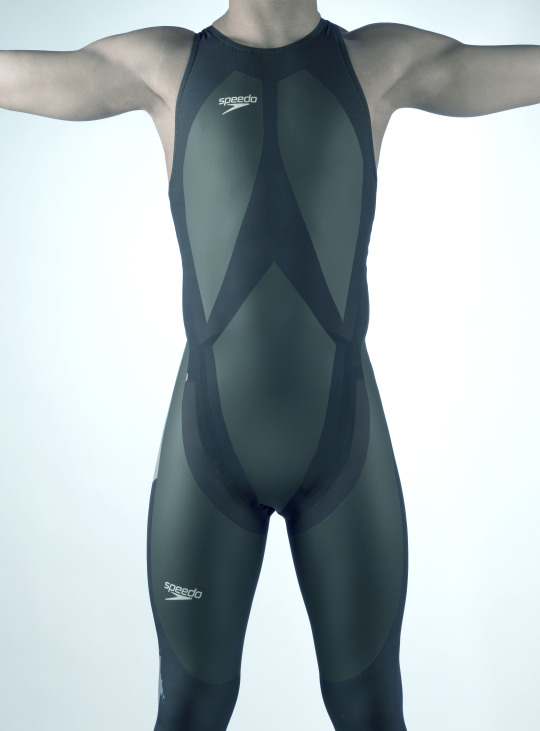
The LZR Racer reduces skin friction drag by covering more skin than traditional swimsuits. Multiple pieces of the water-resistant and extremely lightweight LZR Pulse fabric connect at ultrasonically welded seams and incorporate extremely low-profile zippers to keep viscous drag to a minimum.
Swimsuits That Don’t Drag
When the swimsuit manufacturer Speedo wanted its LZR Racer suit to have as little drag as possible, the company turned to the experts at Langley Research Center to test its materials and design. The end result was that the new suit reduced drag by 24 percent compared to the prior generation of Speedo racing suit and broke 13 world records in 2008. While the original LZR Racer is no longer used in competition due to the advantage it gave wearers, its legacy lives on in derivatives still produced to this day.
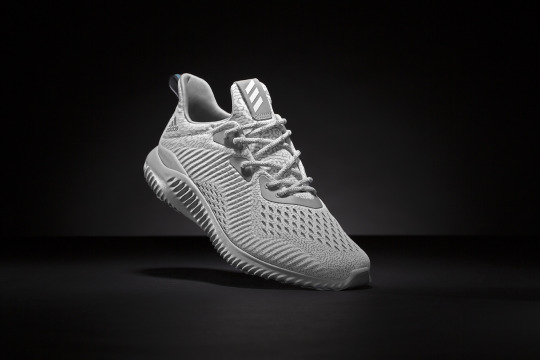
Trilion Quality Systems worked with NASA’s Glenn Research Center to adapt existing stereo photogrammetry software to work with high-speed cameras. Now the company sells the package widely, and it is used to analyze stress and strain in everything from knee implants to running shoes and more.
High-Speed Cameras for High-Speed Shoes
After space shuttle Columbia, investigators needed to see how materials reacted during recreation tests with high-speed cameras, which involved working with industry to create a system that could analyze footage filmed at 30,000 frames per second. Engineers at Adidas used this system to analyze the behavior of Olympic marathoners' feet as they hit the ground and adjusted the design of the company’s high-performance footwear based on these observations.

Martial artist Barry French holds an Impax Body Shield while former European middle-weight kickboxing champion Daryl Tyler delivers an explosive jump side kick; the force of the impact is registered precisely and shown on the display panel of the electronic box French is wearing on his belt.
One-Thousandth-of-an-Inch Punch
In the 1980s, Olympic martial artists needed a way to measure the impact of their strikes to improve training for competition. Impulse Technology reached out to Glenn Research Center to create the Impax sensor, an ultra-thin film sensor which creates a small amount of voltage when struck. The more force applied, the more voltage it generates, enabling a computerized display to show how powerful a punch or kick was.

Astronaut Sunita Williams poses while using the Interim Resistive Exercise Device on the ISS. The cylinders at the base of each side house the SpiraFlex FlexPacks that inventor Paul Francis honed under NASA contracts. They would go on to power the Bowflex Revolution and other commercial exercise equipment.
Weight Training Without the Weight
Astronauts spending long periods of time in space needed a way to maintain muscle mass without the effect of gravity, but lifting free weights doesn’t work when you’re practically weightless. An exercise machine that uses elastic resistance to provide the same benefits as weightlifting went to the space station in the year 2000. That resistance technology was commercialized into the Bowflex Revolution home exercise equipment shortly afterwards.
Want to learn more about technologies made for space and used on Earth? Check out NASA Spinoff to find products and services that wouldn’t exist without space exploration.
Make sure to follow us on Tumblr for your regular dose of space!
2K notes
·
View notes
Text

#Tattoo art#Tattoo inspiration#Tattoo artist life#Tattoo stories#Tattoo tutorials#Tattoo artists talk#Tattoo Q&A#Tattoo cover-up#Tattoo removal#Tattoo history and meaning#Tattoo equipment and supplies#Tattoo aftercare and maintenance#Tattoo shop tours#Tattoo artist interviews#Tattoo design sketches#Tattoo flash art#Tattoo industry news and events
1 note
·
View note
Text
The Tanning Booth
With @breedertfs
Chris approached the tanning booth, attempting to hold back the apprehension that suddenly flooded his system. Had it been silly to think he, a petite, pale kid from middle-of-nowhere Wyoming, could become a porn star? And a gay one at that? He was not a virgin, but his hole also had not reached the point of no return. He just needed the money, bad, and after a hookup had recommended this as an easy way out, Chris decided to try his luck.
Of course, Chris would try his best to stay safe in the industry, but the producer he had signed with had noted changes would be necessary. Even though his future audiences would know he was homosexual (some porn stars were just there for the money, not the sex after all), Chris understood he had to sexualize himself a bit more. He had followed the producer’s suggestions, shifting his diet and focusing on exercising different muscle groups. And now, just days before his first shoot, he was getting a tan.
“That tanning light is gonna change more than just that pasty skin tone,” the producer had joked, as if it was some kind of turning point. Yet now, standing before the menacing machine, Chris almost felt like it was. Deciding it was best not to dwell on his trepidation further, he took a step forward and heard the door click shut behind him. Waiting, naked and alone, Chris began to literally understand what it meant to do anything for money.
After a moment, a magenta light blasted the room in color, momentarily blinding Chris. The fan above his head began to run, slowly redistributing the air throughout the room. Chris felt himself relax, growing lighter as his shoulders began to droop. He did not register that the process had begun, the tanning spray emitting from the walls as droplets carefully coated his body.
The misting began at his feet, covering his toes before moving across the soles to the ankles and slowly carrying up. Due to his loosened consciousness, Chris did not see his tanned feet bloat larger. The toes crept forward as his feet widened, thickening out with a putrid odor as if to announce its grand entrance.
The spray had already moved on however, having stretched out Chris’s legs and added some definition to his calves. Dustings of hair began to emerge across his skin as the droplets darkened his thighs, inflating them to the point that Chris had to readjust and hold a wider stance. Now vulnerable, the droplets swept up across the front and back of Chris’s midsection. His buttocks billowed out into two juicy bubbles while a thick cock bloomed forward with his heavy balls flopping down.
Unbeknownst to Chris, the tanning booth was also laced with a minor stimulant, boosting his libido as it passed over the now properly-sized equipment for the porn star. The producer however knew this, smiling as he watched his newest employee begin to stroke himself absentmindedly through the camera attached within the tanning booth.
Chris began to moan as the spray glazed over his arms and chest. The hand tugging his much larger meat began to grow in size, gradually becoming fit to carry his massive load. Muscle spilled out of Chris’s torso as abs popped in one by one, followed by two pillowy pecs. To compliment, his upper arms ballooned appropriately, forcing his shoulders outwards as the vapor began to darken his neck. While the only physical change involved a fuller circumference, the changes in depth were apparent as each grunt of sexual elation grew deeper and more animalistic.
Finally came the head. At the exterior level, the tanning booth worked its magic over the pimply boyish offerings. Soft jaw replaced by crude angles, brow brought forward with more prominence. Bigger nose, larger forehead, crafting a perfect face oozing of breeding masculinity. But internally, the tanning spray was contaminating Chris’s identity, staining his individuality.
His personality, his background, his morals–all of was subject to corruption. If Chris was to be a porn star, then the producer had to get rid of any doubts or hesitations. He would have a new history, a new story as to how he got to this point, perfectly constructed to never leave or disobey his boss. Chris the hopeful American twink may have made a decent profit, but the rougher, tougher, gay-for-pay Russian stud Kristofer would certainly fatten his wallet. After all, the best gay porn stars were the ones only in it for the money!
So now, happily, the producer watched as Kristofer came to the surface, tantalizingly stroking himself off for his gay fans. The fans he cared nothing about. It took him a moment, but eventually Kristofer spotted the camera, giving it his signature wink while dreaming about which chick he would like to dump a load into before the producer had him on his next shoot.

865 notes
·
View notes
Text
It occurred to me how under-developed piercings are in the elder scrolls, and probably magical fantasy in general.
In elder scrolls games, piercings are there, but theres no shops or mention of them.
What I was really thinking of, however, is enchantment. We can enchant amulets, armor, clothes and rings, but no instances of enchanted piercings. Imagine a mage covered in piercings, each one enchanted to help them in various ways. Oooh, what if they can also enhance local areas? A nose ring that enhances it's user's sense of smell, an eyebrow piercing which sharpens sight, an earing that enhances hearing, etc.
In terms of gameplay, I think this would best be reflected with a a piercing shop, offering a set of piercings similar to the implants in Fallout New Vegas. In NV, you could purchase several implants which provided permanent buffs, with the number of implants being limited to your endurance stat. Same idea, a Piercing Shop which offers top shelf Enchanted Piercings which must be applied precisely and carefully, your character's body can only handle so many constant magical effects coursing through their system (endurance stat check) and provide permanent benefits. Maybe have cheaper ones with draw backs. Maybe have some available during character creation which you can pay to have removed later, some positive and some negative.
I think this shop should also sell mundance piercings and perhaps things like earrings that are just equipable (once your character pays to get their ears pierced) and have minor magical effects.
Some Quick Ideas:
Silver Tongue: A tongue ring which permanently boosts your personality stat by 15 points.
Rod of Magnus: An Industrial Ear Piercing which boosts magicka regen by 30%
352 notes
·
View notes
Text
Thinking about Kamino cloning primarily as a major planetary economic driver and thus extremely A Business and how that would interact with the clones’ existence as a product and more specifically with the whole thing about Quality Control. The enforcement of interchangeability has significant value in the same way the invention of the assembly line and mass produced components have value to industry, i.e. if one part of a large & complex system stops working, you don’t have to rebuild the entire damn thing, you just replace the part.
In a biologically engineered army, that interchangeability can most advantageously manifest in:
Size (smaller range of equipment, armor, housing etc necessary)
medical compatibility (you only have to stock one blood type, organ and tissue donation availability skyrockets etc)
capability (the more you can crosstrain Jeff A to do Jeff Z’s job, the easier it is to replace Jeff Z if he bites it)
So clones that look different but are otherwise to spec in the prioritized categories would probably be fine, because getting rid of them is a loss of product and thus loss of profit.
Of course, as businesspeople, the Kaminoans want their product to seem more high-end than it actually is. So you don’t want to scrap perfectly good stock, but you DO want to make sure those fucking primates don’t act up and pop the hood on their own shitty dye job while the warranty’s still active.
Cue the Kaminoans issuing hair dye, makeup, shitty 2-dollar cosplay contact lenses etc and a bunch of random mercenaries disinterestedly instructing auditoriums of 400 cadets at a time in how to haphazardly cover up your Manufacturing Defects. Half the Mandos are like “if you want an armor painting seminar i have a fucking PhD but i haven’t taken off my helmet in front of another living person in 20 years, for this we’re pulling up the first fucking makeup tutorial that falls out of Space YouTube”.
It turns out it is much, much easier and more efficient to give clones access to Space Youtube than it is to teach them things yourself.
Cue 5 years later the Jedi roll up for pickup and not only is every single clone perfectly identical, they have achieved this via having every face BEAT, hair COIFFED, skin (tone corrected & colormatched ofc) GLOWING, contoured to the GODS,
#star war#yap yap#ofc that means whenever a natborn officer unexpectedly strolls into some area 400 clones scream and dive for the bathrooms#like I DONT HAVE MY FACE ON!!!!!!#most expensive line item on the GAR budget: replacement starships#second highest: standard issue trooper Sephora full face kit
238 notes
·
View notes
Note
Writing an oc that's a streamer?
Writing Notes: Streamer Characters
Live Streamer
Also livestreamer or online streamer
Someone who makes videos that show them playing computer games, talking about products, or doing other activities, and streams them (i.e., puts them on the internet) at the same time as they are being made.
An individual who broadcasts real-time video content over the internet, engaging with an audience through online platforms.
Transmits live or on-demand audio or video content while users listen or watch.
Livestreams are deployed over various platforms, including social media platforms like YouTube Live, Facebook Live, Twitter, Instagram Live, and TikTok, as well as through professional business services, such as Kaltura and Dacast.
Unlike pre-recorded videos, live streams occur in the moment, allowing viewers to interact with the streamer through chat functions and other interactive features.
This immediacy creates a dynamic and engaging experience for both the streamer and the audience.
Live streamers cover a wide range of content:
playing video games,
hosting talk shows,
conducting interviews,
cooking,
crafting, and
live vlogging daily activities.
The versatility of live streaming content means that streamers can find their niche and build a community around shared interests.
Successful live streamers often cultivate a loyal following by maintaining a consistent streaming schedule, engaging directly with their viewers, and creating a sense of community.
What your Character does as a Live Streamer
Content Creation: Live streamers plan, prepare, and execute engaging live broadcasts. They choose topics or activities that resonate with their audience, maintain a consistent streaming schedule, and ensure that their content is entertaining and relevant to their viewers.
Audience Interaction: Interacting with viewers in real-time is a key responsibility. Streamers engage through live chat, responding to comments, questions, and feedback during the stream. They foster a sense of community by acknowledging and involving their audience, using interactive features like polls, Q&A sessions, and shout-outs to enhance viewer engagement.
Technical Management: Managing technical aspects is crucial to a successful stream. This includes setting up and maintaining streaming equipment such as cameras, microphones, lighting, and streaming software. Streamers must ensure a stable internet connection, troubleshoot technical issues promptly, and optimize stream quality to deliver a seamless viewing experience.
Monetization: Monetizing their channels is an important aspect for many streamers. This can involve receiving viewer donations, earning subscriptions (e.g., Twitch subscriptions), securing sponsorships and partnerships with brands, and generating revenue through advertising. Streamers may also leverage merchandise sales, affiliate marketing, or exclusive content to diversify their income streams.
Community Building: Building and nurturing a community around their content is essential. Streamers cultivate a loyal following by creating a welcoming environment, engaging with viewers regularly, and participating in community events or collaborations. They may also moderate chat and ensure a positive and inclusive atmosphere during streams.
Continuous Improvement: Successful streamers constantly strive to improve their content and grow their audience. They analyze viewer analytics to understand audience preferences and trends, experiment with new content formats or streaming techniques, and stay updated with industry trends and platform changes to maintain relevance and competitiveness in the streaming space.
What Type of Live Streamer is your Character?
Live streamers can be categorized into various types based on the content they stream and the communities they engage with. Here are some common types:
Gaming Streamers: Gaming streamers focus on playing and broadcasting video games live to their audience. They may specialize in specific genres such as first-person shooters, role-playing games, or multiplayer online battle arenas (MOBAs). Gaming streamers entertain viewers with their gameplay skills, commentary, and interactions with their audience through live chat.
IRL (In Real Life) Streamers: IRL streamers share their real-life experiences and activities in real-time. They broadcast everyday activities such as traveling, exploring new places, attending events, or participating in challenges. IRL streamers often engage their audience by interacting with them while showcasing their daily routines or special events happening in their lives.
Talk Show and Podcast Streamers: Talk show and podcast streamers host live discussions, interviews, or debates on various topics of interest. They invite guests or panelists to join their streams, engaging with them and their audience through insightful conversations and debates. Talk show streamers may cover topics ranging from politics and current events to pop culture and entertainment.
Creative Streamers: Creative streamers focus on showcasing their artistic talents and skills live. They create art, music, crafts, or digital designs while interacting with their audience. Creative streamers often provide tutorials, share their creative process, and take viewer suggestions or requests for their next project.
Music Streamers: Music streamers perform live music sessions, DJ sets, or music production sessions for their audience. They may cover popular songs, perform original compositions, or engage in interactive music creation with their viewers. Music streamers often use platforms that allow them to receive song requests and interact with their audience in real-time.
Fitness and Sports Streamers: Fitness and sports streamers broadcast live workouts, training sessions, or sports events. They provide exercise routines, fitness tips, and motivation to their audience while demonstrating exercises or participating in sports activities. Fitness streamers may also engage in challenges or competitions with their viewers.
Educational Streamers: Educational streamers conduct live tutorials, lectures, or workshops on topics such as science, technology, languages, or academic subjects. They share knowledge, answer viewer questions in real-time, and provide interactive learning experiences through demonstrations or experiments.
Cooking Streamers: Cooking streamers broadcast live cooking sessions where they prepare recipes, share cooking tips, and engage with their audience while demonstrating culinary techniques. They may also take viewer suggestions for recipes or cooking challenges, creating a community around food and culinary arts.
What Would your Character's Workplace Look Like?
The workplace of a live streamer is typically centered around creating a conducive environment for broadcasting engaging and interactive content.
Unlike traditional office settings, live streamers often work from home or a dedicated studio space that they have set up for streaming purposes.
This space is vital for maintaining control over the streaming setup and creating a comfortable atmosphere conducive to content creation.
At home, live streamers often have a designated area or room where they set up their streaming equipment.
This might include a high-quality camera, microphone, lighting rigs, and a powerful computer or gaming console capable of handling streaming software and gameplay simultaneously.
The setup is tailored to their specific streaming needs, ensuring optimal audiovisual quality and reliability during broadcasts.
Beyond the physical setup, the digital workspace of a live streamer involves managing streaming software, interacting with viewers through chat functions, and monitoring analytics in real-time.
This requires multitasking skills to engage with the audience while focusing on gameplay, discussion topics, or other content being streamed.
Streamers also use this digital space to collaborate with moderators, manage community interactions, and coordinate special events or collaborations with other content creators.
Some Streaming Strategies your Character Could Use
Makes their livestream unique
Focuses on their livestream audience’s needs
Surprises their livestream audience
Promotes their livestream
Interacts with their viewers
Tells viewers what to do at the end of a livestream (e.g., see more content, attend an event)
Sources: 1 2 3 4 5 ⚜ More: Writing Notes & References
Hope this helps with your writing!
#streamer#writing reference#writeblr#writing notes#literature#writers on tumblr#dark academia#spilled ink#writing prompt#light academia#creative writing#character building#character development#writing resources
73 notes
·
View notes
Text
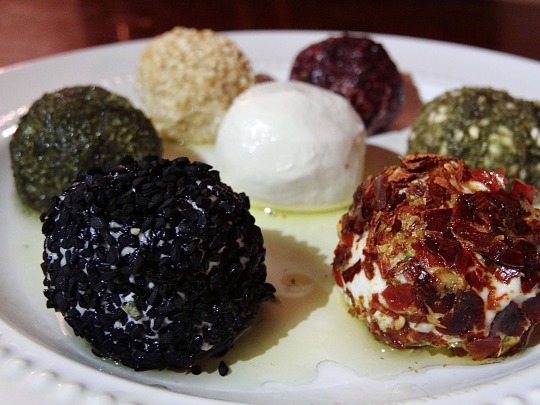
[ID: Seven yoghurt balls on a plate drizzled with olive oil. The one in the center is plain; the others are covered in mint, toasted sesame seeds, ground sumac, za'tar, crushed red chili pepper, and nigella seeds. End ID]
لبنة نباتية / Labna nabatia (Vegan labna)
Labna (with diacritics: "لَبْنَة"; in Levantine pronunciation sometimes "لَبَنَة" "labanay") is a Levantine cow's, sheep's, or goat's milk yoghurt that has been strained to remove the whey and leave the curd, giving it a taste and texture in between those of a thick, tart sour cream and a soft cheese. The removal of whey, in addition to increasing the yoghurt's tanginess and pungency, makes it easier to preserve: it will keep in burlap or cheesecloth for some time without refrigeration, and may be preserved for even longer by rolling it into balls and submerging the balls in olive oil. Labna stored in this way is called "لبنة كُرَات" ("labna kurāt") or "لبنة طابات" ("labna ṭābāt"), "labna balls." Labna may be spread on a plate, topped with olive oil and herbs, and eaten as a dip for breakfast or an appetizer; or spread on kmaj bread alongside herbs, olives, and dates to make sandwiches.
The word "labna" comes from the Arabic root ل ب ن (l b n), which derives from a Proto-West-Semitic term meaning "white," and produces words relating to milk, yoghurt, nursing, and chewing. The related term "لَبَن" ("laban"; also transliterated "leban") refers to milk in Standard Arabic, but in Levantine Arabic is more likely to refer to yoghurt; a speaker may specify "لَبَن رَائِب" (laban rā'ib), "curdled milk," to avoid confusion.
Labna is a much-beloved food in Palestine, with some people asserting that no Palestinian home is without a jar. Making labna tabat is, for many, a necessary preparation for the winter season. However, by the mid-2010s, the continuation of Israel's blockade of the Gaza strip, as well as Israeli military violence, had severely weakened Gaza's dairy industry to the point where almost no labna was being produced. Most of the 11 dairy processors active in Gaza in 2017 (down from 15 in 2016) only produced white cheese—though Mustafa Eid's company Khalij had recently expanded production to other forms of dairy that could be made locally with limited equipment, such as labna, yoghurt, and buttermilk.
Dairy farmers and processors pushed for this kind of innovation and self-sufficiency against deep economic disadvantage. With large swathes of Gaza's arable land rendered unusable by Israeli border policing and land mines, about 90% of farmers were forced by scarce pasture land and low fodder production to feed their herds with increasingly expensive fodder imported from Israel—dairy farmers surveyed in 2017 spent an estimated 87% of their income on fodder, which had doubled in price since 2007. Cattle were thus fed with low quantities of, or low-quality, fodder, resulting in lower milk production and lower-quality milk.
Most dairy processors were also unable to access or afford the equipment necessary to maintain, upgrade, or diversify their factories. Since 2007, Israel has tightly restricted entry into Gaza of items which they consider to have a "dual use": i.e., a potential civilian and military function. This includes medical equipment, construction materials, and agricultural equipment and machinery, and impacts everything from laboratory equipment to ensure safe food supplies to packaging and labelling equipment. Of the dairy products that Gazan farmers and processors do manage to produce, Israel's control over their export can cause huge financial losses—as when Israel prohibited the export of Palestinian dairy and meat to East Jerusalem without warning in March of 2020, costing estimated annual losses of 300 million USD.
In addition to this kind of economic manipulation, direct military violence threatens Gaza's dairy industry. Mamoun Dalloul says that his factory was accused of holding rockets and subsequently bombed in 2008, 2010, 2012, and again in 2014, resulting in repeated moves and the loss of the capability to produce yellow cheese. The Israeli military partially or totally destroyed 10 dairy processing factories, and killed almost 2,000 cows, during its 2014 invasion of Gaza, resulting in an estimated 43 million USD of damage to the dairy sector alone. Damage to cow-breeding farms in 2014 reduced the number of dairy cows to 2,600, just over half their previous number. Damage to, or destruction of, wells, water reservoirs, water tanks, and the Gaza Power Plant's fuel tank exacerbated pre-existing problems with producing cattle feed and with the transportation, processing, and refrigeration of dairy products, leading to spoiled milk that had to be disposed of. Repeated offensives made dairy processors reluctant to re-invest in equipment that could be destroyed at any time.
Israeli industry profits by making Gazan self-sufficiency untenable. Israeli goods entering Palestine are not subject to import taxes, and Israeli dairy companies are not dealing with the contaminated water, limited electricity, high costs of feed, out-of-date and expensive-to-repair equipment, and scarce land (some companies, such as Tnuva, purchase milk from farms on illegal settlements in the West Bank) with which Gazan producers must contend. The result is that the local market in Gaza is flooded with imports that are cheaper, more diverse, and of higher quality than anything that local producers can offer. Many consumers believe that Israeli products are safer to eat.
Nevertheless, Gazans continue building and rebuilding. Despite significant decreases in ice cream factories' production after the imposition of Israel's blockade in 2007, Abu Mohammad noted in 2015 that locally produced ice cream was cheaper and more varied than Israeli imports. In 2017, the amount of dairy sold in 74 shops in Gaza that was sourced locally, rather than from Israel, had increased from 10% to 60%. Ayadi Tayyiba, the region's first factory with an all-woman staff, opened in 2022; it produced cheese, yoghurt, and labna with sheep's milk from affiliated farms. However, demand for sheep's milk products has decreased in Gaza due to its higher production costs, leading the factory to supplement its supply with purchased cow's milk.
The current Israeli genocidal offensive on Gaza has caused damage of the same kind as—though to a greater extent than—previous shellings and invasions. Lack of ability to sell milk that had already been produced to factories, as well as lack of access to electricity, caused an estimated 35,000 liters of milk to spoil daily in October of 2023.
Support Palestinian resistance by calling Elbit System’s (Israel’s primary weapons manufacturer) landlord, donating to Palestine Legal's activist defense fund, and donating to Palestine Action’s bail fund.
Equipment:
A blender
A kettle or pot, to boil water
A cheesecloth or tea towel
Ingredients:
1 cup (130g) cashews (soaked, if your blender is not high-speed)
3/4 cup filtered or distilled water, boiled
1-3 vegetarian probiotic capsules (containing at least 10 billion cultures total)
A few pinches sea salt
More water, to boil
Arabic-language recipes for vegan labna use bulghur, almonds, or cashews as their base. This recipe uses cashew to achieve a smooth, creamy, non-crumbly texture, and a mild taste like that of cow's milk labna. You might try replacing half the cashews with blanched almonds for a flavor more similar to that of sheep's or goat's cheese.
Make sure your probiotic capsules contain no prebiotics, as they can interfere with the culture. The probiotic may be multi-strain, but should contain some of: Lactobacillus casei, Lactobacillus rhamnosus, Bifidobacterium bifidus, Lactobacillus acidophilus. The number of capsules you need will depend on how many cultures each capsule is guaranteed to contain.
Instead of probiotic capsules, you can use a speciality starter culture pack intended for use in culturing vegan dairy, many of which are available online. Note that starter cultures may be packaged with small amounts of powdered milk for the bacteria to feed on, and may not be truly vegan.
If you want a mustier, goat-ier taste to your labna, try replacing the water with rejuvelac made with wheat berries.
You can also start a culture by using any other product with active cultures, such as a spoonful of vegan cultured yoghurt. If you have a lot of cultured yoghurt, you can just skip to straining that directly (step 5) to make your labna—though you won't be able to control how tangy the labna is that way.
Instructions:
This recipe works by blending together cashews and water into a smooth, creamy spread, then culturing it into yoghurt, and then straining it (the way yoghurt is strained to make labna). It's possible that you could skip the straining step by adding more cashews, or less water, to the yoghurt to obtain a thicker texture, but I have not tested the recipe this way.
1. If your blender is not high-speed, you will need to soak your cashews to soften them. Soak in filtered or distilled water for 2-4 hours at room temperature, or overnight in the fridge. Rinse them off with just-boiled water.
2. Boil several cups of water and use the just-boiled water to rinse your blender, tamper, measuring cups, the bowl you will ferment your yoghurt in, and a wooden spoon or rubber spatula to stir. Your bowl and stirring implement should be in a non-reactive material such as wood, clay, glass, or silicone.
3. Make the yoghurt. Blend cashews with 3/4 cup just-boiled water for a couple of minutes until very smooth. Transfer to your bowl and allow to cool to about skin temperature (it should feel slightly warm if dabbed on the inside of your wrist). If the mixture is too hot, it may kill the bacteria.
4. Culture the yoghurt. Open the probiotic capsules and stir the powder into the cashew paste. Cover the bowl with a cheesecloth or tea towel. Ferment for 24 hours: on the countertop in summer, or in an oven with the light on in winter.
Taste the yoghurt with a clean implement (avoid double-dipping!). Continue fermenting for another 12-24 hours, depending on how tangy you want your labna to be. A skin forming on top of the yoghurt is no problem and can be mixed back in. Discard any yoghurt that grows mold of any kind.
5. Strain the yoghurt to make labna. Place a mesh strainer in a bowl, making sure there's enough room beneath the strainer for liquid to collect at the bottom of the bowl; line the strainer with cheesecloth or a tea towel, and scoop the cultured yoghurt in. Sprinkle salt over top of the yoghurt. Fold the towel or cheesecloth back over the yoghurt, and add a small weight, such as a ceramic plate or a can of beans, on top.
You can also tie the cheesecloth into a bag around a wooden spoon and place the wooden spoon across the rim of a pitcher or other tall container to collect the whey. The draining may occur less quickly without the weight, though.
Strain in the refrigerator for 24-48 hours, depending on the desired texture. I ended up draining about 2 Tbsp of whey.
6. If not making labna balls: Put in an airtight jar, and add just enough olive oil to cover the surface of the labna. Store in the fridge for up to two months.
7. To form balls (optional): Oil your hands to form the labna into small balls and place them on a baking sheet lined with parchment paper. They may still be quite soft.
Optionally sprinkle with, or roll in, dried mint, za'tar, sesame seeds, nigella seeds (القزحة), ground sumac, or crushed red chili pepper, as desired.
Optionally, for firmer balls, lightly cover with another layer of parchment paper and then a kitchen towel, and leave in the refrigerator to dry for about a day.
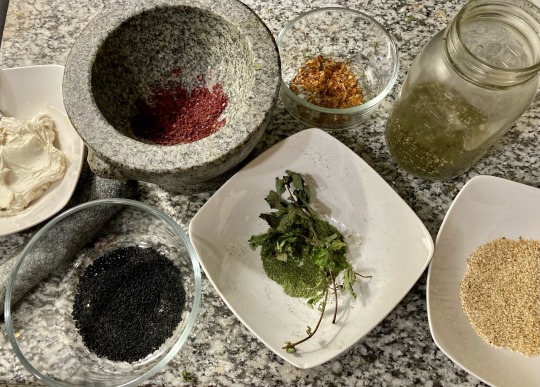
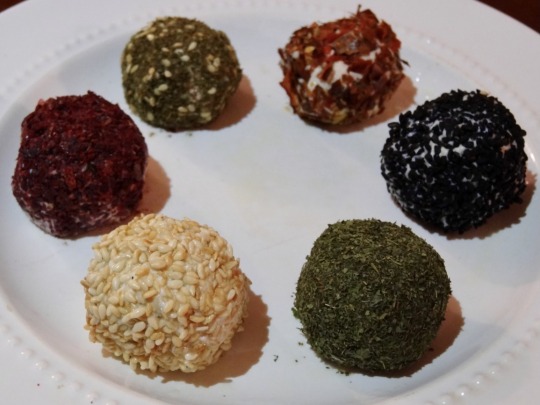
Place labna balls in a clean glass jar and add olive oil to cover. Retrieve labna from the jar with a clean implement. They will last in the fridge for about a year.
550 notes
·
View notes
Text
D-Day was 80 years ago today!
D-Day was the first day of Operation Overlord, the Allied attack on German-occupied Western Europe, which began on the beaches of Normandy, France, on 6 June 1944. Primarily US, British, and Canadian troops, with naval and air support, attacked five beaches, landing some 135,000 men in a day widely considered to have changed history.
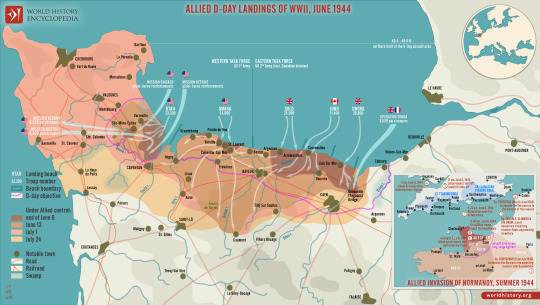
Where to Attack?
Operation Overlord, which sought to attack occupied Europe starting with an amphibious landing in northwest France, Belgium, or the Netherlands, had been in the planning since January 1943 when Allied leaders agreed to the build-up of British and US troops in Britain. The Allies were unsure where exactly to land, but the requirements were simple: as short a sea crossing as possible and within range of Allied fighter cover. A third requirement was to have a major port nearby, which could be captured and used to land further troops and equipment. The best fit seemed to be Normandy with its flat beaches and port of Cherbourg.
The Atlantic Wall
The leader of Nazi Germany, Adolf Hitler (1889-1945), called his western line of defences the Atlantic Wall. It had gaps but presented an impressive string of fortifications along the coast from Spain to the Netherlands. Construction of gun batteries, bunker networks, and observation posts began as early as 1942.
Many of the German divisions were not crack troops but inexperienced soldiers, who were spending more time building defences than in vital military training. There was a woeful lack of materials for Hitler's dream of the Atlantic Wall, really something of a Swiss cheese, with some strong areas, but many holes. The German army was not provided with sufficient mines, explosives, concrete, or labourers to better protect the coastline. At least one-third of gun positions still had no casement protection. Many installations were not bomb-proof. Another serious weakness was naval and air support. The navy had a mere 4 destroyers available and 39 E-boats while the Luftwaffe's (German Air Force's) contribution was equally paltry with only 319 planes operating in the skies when the invasion took place (rising to 1,000) in the second week.
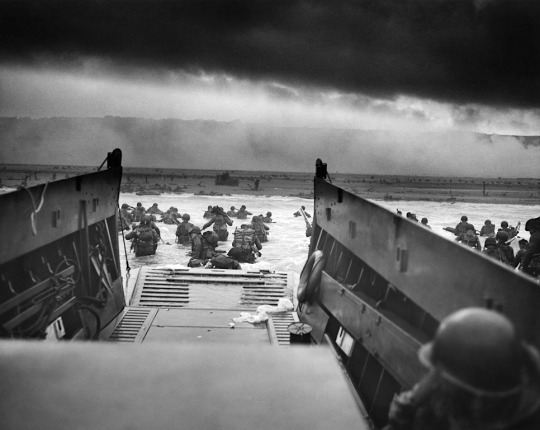
Neptune to Normandy
Preparation for Overlord occurred right through April and May of 1940 when the Royal Air Force (RAF) and United States Air Force (USAAF) relentlessly bombed communications and transportation systems in France as well as coastal defences, airfields, industrial targets, and military installations. In total, over 200,000 missions were conducted to weaken as much as possible the Nazi defences ready for the infantry troops about to be involved in the largest troop movement in history. The French Resistance also played their part in preparing the way by blowing up train lines and communication systems that would ensure the defenders could not effectively respond to the invasion.
The Allied fleet of 7,000 vessels of all kinds departed from English south-coast ports such as Falmouth, Plymouth, Poole, Portsmouth, Newhaven, and Harwich. In an operation code-named Neptune, the ships gathered off Portsmouth in a zone called 'Piccadilly Circus' after the busy London road junction, and then made their way to Normandy and the assault areas. At the same time, gliders and planes flew to the Cherbourg peninsula in the west and Ouistreham on the eastern edge of the planned landing. Paratroopers of the 82nd and 101st US Airborne Division attacked in the west to try and cut off Cherbourg. At the eastern extremity of the operation, paratroopers of the 6th British Airborne Division aimed to secure Pegasus Bridge over the Caen Canal. Other tasks of the paratrooper and glider units were to destroy bridges to impede the enemy, hold others necessary for the invasion to progress, destroy gun emplacements, secure the beach exits, and protect the invasion's flanks.
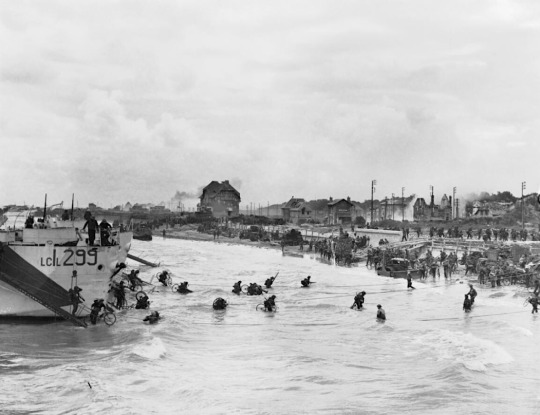
The Beaches
The amphibious attack was set for dawn on 5 June, daylight being a requirement for the necessary air and naval support. Bad weather led to a postponement of 24 hours. Shortly after midnight, the first waves of 23,000 British and American paratroopers landed in France. US paratroopers who dropped near Ste-Mère-Église ensured this was the first French town to be liberated. From 3.00 a.m., air and naval bombardment of the Normandy coast began, letting up just 15 minutes before the first infantry troops landed on the beaches at 6.30 a.m.
The beaches selected for the landings were divided into zones, each given a code name. US troops attacked two, the British army another two, and the Canadian force the fifth. These beaches and the troops assigned to them were (west to east):
Utah Beach - 4th US Infantry Division, 7th US Corps (1st US Army commanded by Lieutenant General Omar N. Bradley)
Omaha Beach - 1st US Infantry Division, 5th US Corps (1st US Army)
Gold Beach - 50th British Infantry Division, 30th British Corps (2nd British Army commanded by Lieutenant-General Miles C. Dempsey)
Juno Beach - 3rd Canadian Infantry Division (2nd British Army)
Sword Beach - 3rd British Infantry Division, 1st British Corps (2nd British Army)
In addition, the 2nd US Rangers were to attack the well-defended Pointe du Hoc between Utah and Omaha (although it turned out the guns had never been installed there), while Royal Marine Commando units attacked targets on Gold, Juno, and Sword.
The RAF and USAAF continued to protect the invasion fleet and ensure any enemy ground-based counterattack faced air attack. As the Allies could put in the air 12,000 aircraft at this stage, the Luftwaffe's aerial fightback was pitifully inadequate. On D-Day alone, the Allied air forces flew 15,000 sorties compared to the Luftwaffe's 100. Not one single Allied aircraft was lost to enemy fire on D-Day.
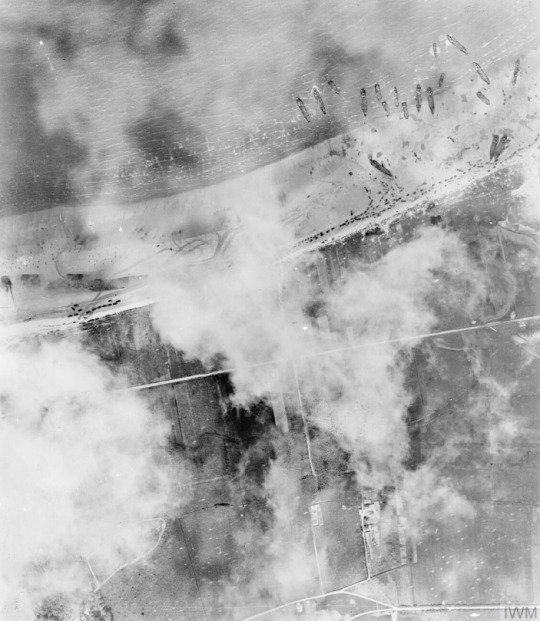
Packing Normandy
By the end of D-Day, 135,000 men had been landed and relatively few casualties were sustained – some 5,000 men. There were some serious cock-ups, notably the hopeless dispersal of the paratroopers (only 4% of the US 101st Air Division were dropped at the intended target zone), but, if anything, this caused even more confusion amongst the German commanders on the ground as it seemed the Allies were attacking everywhere. The defenders, overcoming the initial handicap that many area commanders were at a strategy conference in Rennes, did eventually organise themselves into a counterattack, deploying their reserves and pulling in troops from other parts of France. This is when French resistance and aerial bombing became crucial, seriously hampering the German army's effort to reinforce the coastal areas of Normandy. The German field commanders wanted to withdraw, regroup and attack in force, but, on 11 June, Hitler ordered there be no retreat.
All of the original invasion beaches were linked as the Allies pushed inland. To aid thousands more troops following up the initial attack, two artificial floating harbours were built. Code-named Mulberries, these were located off Omaha and Gold beaches and were built from 200 prefabricated units. A storm hit on 20 June, destroying the Mulberry Harbour off Omaha, but the one at Gold was still serviceable, allowing some 11,000 tons of material to be landed every 24 hours. The other problem for the Allies was how to supply thousands of vehicles with the fuel they needed. The short-term solution, code-named Tombola, was to have tanker ships pump fuel to storage tanks on shore, using buoyed pipelines. The longer-term solution was code-named Pluto (Pipeline Under the Ocean), a pipeline under the Channel to Cherbourg through which fuel could be pumped. Cherbourg was taken on 27 June and was used to ship in more troops and supplies, although the defenders had sunk ships to block the harbour and these took some six weeks to fully clear.
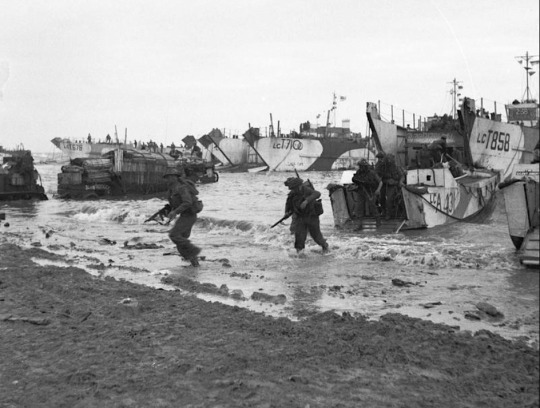
Operation Neptune officially ended on 30 June. Around 850,000 men, 148,800 vehicles, and 570,000 tons of stores and equipment had been landed since D-Day. The next phase of Overlord was to push the occupiers out of Normandy. The defenders were not only having logistical problems but also command issues as Hitler replaced Rundstedt with Field Marshal Günther von Kluge (1882-1944) and formally warned Rommel not to be defeatist.
Aftermath: The Normandy Campaign
By early July, the Allies, having not got further south than around 20 miles (32 km) from the coast, were behind schedule. Poor weather was limiting the role of aircraft in the advance. The German forces were using the countryside well to slow the Allied advance – countless small fields enclosed with trees and hedgerows which limited visibility and made tanks vulnerable to ambush. Caen was staunchly defended and required Allied bombers to obliterate the city on 7 July. The German troops withdrew but still held one-half of the city. The Allies lost around 500 tanks trying to take Caen, vital to any push further south. The advance to Avranches was equally tortuous, and 40,000 men were lost in two weeks of heavy fighting. By the end of July, the Allies had taken Caen, Avranches, and the vital bridge at Pontaubault. From 1 August, Patton and the US Third Army were punching south at the western side of the offensive, and the Brittany ports of St. Malo, Brest, and Lorient were taken.
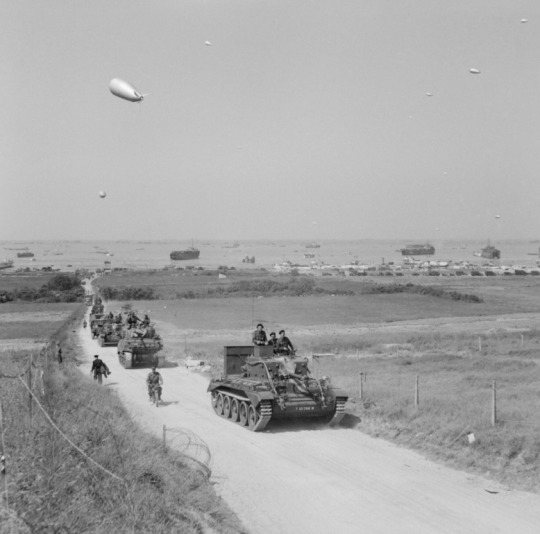
German forces counterattacked to try and retake Avranches, but Allied air power was decisive. Through August 1940, the Allies swept southwards to the Loire River from St. Nazaire to Orléans. On 15 August, a major landing took place on the southwest coast of France (French Riviera landings) and Marseille was captured on 28 August. In northern France, the Allies captured enough territory, ports, and airfields for a massive increase in material support. On 25 August, Paris was liberated. By mid-September, the Allied troops in the north and south of France had linked up and the campaign front expanded eastwards pushing on to the borders of Germany. There would be setbacks like Operation Market Garden of September and a brief fightback at the Battle of the Bulge in December 1944, but the direction of the war and ultimate Allied victory was now a question of not if but when.
138 notes
·
View notes
Note
herofy the green goblin
Answering this separately from the person who requested Norman Osborn....
Norman is his usual self- cold, calculating, ruthless, abusive, and a titan of industry- but the Goblin Persona, with whom he crucially shares no memories, is a fun-loving showman in the vein of The Creeper. His debut appearance in Amazing Spider-Man 14 consisted of him approaching Spider-Man on friendly terms with an offer to shoot a movie together- which turns out to be a trick to lure him into an ambush where the other supervillains Spidey is meant to fight are played by the real guys. Then the Hulk shows up. But in this hypothetical, the movie deal is genuine. So are the supervillains- why hire actors when you can get the real thing?- and then The Hulk still shows up. It's still a bad time! But it was never a plan to pre-emptively kill a superhero as a prelude to building a criminal empire. He just thought it'd be fun.
And you go on for a while like that- the Goblin's not trying to get anybody killed, he's just stirring the pot in fun and interesting ways. He helps Spider-Man out and then switches sides mid battle like Peter Pan. Things always have a way of panning out that it's more trouble than it's worth to chase after him and things are slightly better for his having shown up than they would be otherwise. What's a little mob war between friends?
Working off residual memories from when he's in his Norman persona, he'll often hit Oscorp's corrupt enterprises and terrorize corrupt city officials and industrialists associated with Oscorp, creating the false impression that he's a disgruntled ex-employee when what's closer to true is that he's Norman's deeply buried conscience acting up. He's also playing a lot of fun cat and mouse keeping his equipment, hideouts and plans safe from Osborne, who's smart enough to notice that the goblin only appears when he's lost time, and only after he first started dicking around with that serum- he's stopped taking it, but the goblin's smart enough to make more and take it when he's got control of the body. He's also pointedly criminal enough as The Goblin (albeit in a palatable PR friendly way) that Norman has some incentive to pour some resources into covering his alter ego's tracks, much as he might like him squashed for good.
79 notes
·
View notes
Note
Hii
I dont know if you write for Alex tran ?
If you do could you write one with Alex and reader were the reader also works at smosh.
I dont have a specific idea so i would love if you could just write something cute and fluffy. Thanks
:]
Dating Alex Tran Headcanons

Pairing: Alex Tran x gn!Partner!Reader
─ · · TAGS: gender-neutral pronouns, established couple and fluff... thats about it!
─ · · MASTERLIST | TAGLIST REQUEST
─ · · A/N: Sorry this took awhile, I had to do my research but I hope this isn't too bad!!
─────── · ·
↳ You and Alex were dating prior to you joining him at Smosh when the opportunity presented itself. You already worked in the entertainment industry as a production assistant to a Late Night Television Show but you could image how repetitive that became after awhile so you jumped ship as soon as you could
↳ At Smosh, you and Alex constantly "umm, actually-ed" each other when it came to set days, it became a battle of the nerds and the cast was all ready to grab popcorn and watch. Arguing (lovingly) over game rules and what you both wanted to see happen in the video while also ensuring they kept on track
↳ You combing back his hair in between shoots, you both sending one another memes throughout the day and you both have each other on your phones home screens
↳ Your texts to one another are a mixture of screenshots for work or quoting tweets you found to the latest gaming new albeit board or digital. (If anyone tried to read over your shoulder, they would be ultimately unable to know what the hell you both were talking about)
↳ Going on double dates with Shayne and Courtney outside of work, from going to the arcade, karaoke, or just a simple dinner, you both loved spending everyday together, every hour.
↳ You both definitely plays boardgames together, testing them for the Games channel while also both trying to cheat and get the other one not to catch on. Friendly competition never hurt anyone in your relationship
↳ When the office gets cold, you can often be seen stealing one of Alex's hoodies while running around equipment between sets
↳ You both go to conventions together and buy matching merch for your favourite animes, games, and pop culture references. (You both also fanboy/girl over your favourite voice actors, your walls are covered by photo-ops of you two with them striking various poses)
↳ Don't even get anyone started on your shared Magic the Gathering card collection, it is both your prized possession and you love to show off the books on your coffee table back at your shared apartment.
↳ You both get ready beside each other in the morning and grab breakfast from the cafe down the road before carpooling to the office. You also both grab coffees for one another throughout the day
↳ Everyday when you both go home, you put on random youtube videos to play in the background before cuddling with one another and falling asleep before one of you wakes you both up to move towards the actual bed.
─────── · ·
─ · · TAGLIST: @lisiliely @missflufffanfics
#alex tran x reader#alex tran#alex x reader#smosh#smosh games#smosh x reader#fanfic#fanfiction#simp-ly#simp-ly-writes#smosh image#smosh imagine#smosh fanfic#smosh fanfiction#smoshblr#smosh squad#headcanons#smosh headcanons#fluff#cute#established relationship
57 notes
·
View notes